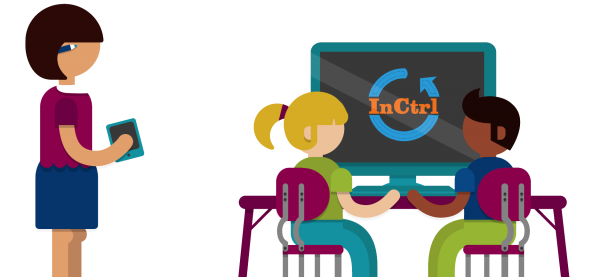While all InCtrl lessons already meet Common Core standards in English/Language Arts, here are additional activity ideas and subject-area connections to help you integrate the topic of digital citizenship into English/Language Arts.
Use digital media and tools to promote literacy, writing, research, and communication skills.
- Have students create a presentation to demonstrate knowledge, to present a book report, or critical review.
- Think of how students can use PowerPoint, iMovie, or create a poster, PSA or podcast as a summative assessment.
- Think of more ways that your class can use digital meeting or communication technologies such as GoToMeeting, Skype, or Google Hangouts. For example, hold book club discussions, study sessions, virtual assemblies, or class presentations with students from other schools, communities, states, or countries.
- Have students present their knowledge, opinions, projects or debates to younger students, fellow students, adults or public officials.
- Collaborate with teachers of other subjects to encourage students to exercise their communication and writing skills using responsible and ethical research methods and multimedia tools.
- Blogging: Try KidBlog a free and easy blog site for your class to use. It does not require your students to have an email address.
- Recommended Children’s Literature: There are several books that cover digital citizenship topics from a child’s perspective and connect to the InCtrl lessons. Download the list.
“The InCtrl lessons are chalk-full of helpful information for the teacher. The lesson on privacy, “Your Digital Footprint: Leaving a Mark” is [especially] vital for my students right now…to see that the information that they put out on the web is there forever.”
Teacher, Virginia
“The InCtrl curriculum is very useful – it is well-thought out, with easy to follow steps, and flexible enough for teachers to integrate their own ideas.”
Teacher, New York
Lesson Idea Starters
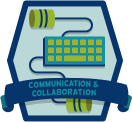
Conduct this lesson at the beginning of the year. Teach along with concepts and expectations of acceptable behaviors to each other and to school property and equipment, communication skills, and when developing class norms and guidelines for working together in a group digitally.
Interview or invite local business owners or community leaders to talk to students about how they use digital media to collaborate and get things done.
Have students interview their parents about family guidelines for using social networking sites. Ask: How do their parents use social networks in their personal and professional lives (Skype, Facebook, LinkedIn, for example)? What are their favorite sites and why? Do they have rules about using such sites at work? What sites are appropriate for students and their family to use at home?
Discuss how to write proper letters to pen pals in different regions, then teach them about local landmarks, monuments, traditions, dress, food, music, etc.
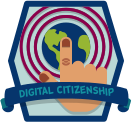
Have students write a story from a digital device’s point of view. For example, a cell phone. Ask: What do you do all day? What do you see? Where do you go? Have students share their stories then reflect and discuss about how much a device is used.
Have students examine the similarities and/or differences between the digital devices they use to what their own parents use today. Then, have them interview their parents to find out what devices they have used over time and how they have changed, then write a reflection on the interview sharing what they discovered about the changing of technology and how different generations use devices for different reasons.
- Compare and contrast the technological devices their families have owned over time.
- Research the different digital and technological inventions used for communications, their inventors, and how the technology has evolved over time. For instance, start with the telegram, telephone, or invention of the Internet.
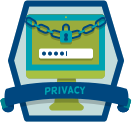
Use the apps Explain Everything and Tellagami to explain what a cookie is, or what students learned about keeping their private information safe, and about minimizing their digital footprint.
Create a chart of plusses and minuses of online visibility versus privacy with students.
Have students write a poem, rap, or short story about how to keep a positive digital footprint.
Hold a debate or have students write a persuasive argument for privacy, visibility or balance.
Using storyboarding software, such as Storyboard That or Google’s storyboard templates, or movie-making software, such as iMovie, students can create a trailer or short film sharing what they have learned about privacy and the (positive/negative) impact different actions can have on a person’s digital footprint.
- The topic of “Big Brother”, and books such as Brave New World and 1984 that deal with the change in privacy with the evolution of technology. Ask: What is privacy? How has it changed in your lifetime? Why is it important to you? What would you think if you knew that everything you did or said was recorded? How would that change/not change your behaviors?
- Reality TV shows, such as “Big Brother” or “Real World” for example, as well as other types (such as competitions, hidden cameras, a “day in the life”, etc.). Discuss shows students have heard of or watched, and ask: How much of your life would you want on TV? In what scenarios, if any, would you be open to having your life televised? How much of reality TV is real? How much of it isn’t real?
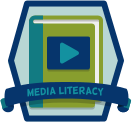
Look at an advertisement, commercial, political or advocacy ad, video, or website with students and use the “see-think-wonder” (see example) routine to discuss and deconstruct it. Ask: What do you see? What do you think about that? What does it make you wonder?
Using tools suggested in the lesson, have students create their own advertisements for a book in either print or digital media. For example, they can create their own book trailers using iMovie (see samples and tutorial) for their favorite books, then create and attach a QR code* to copies available in the library so other kids can view them. (*Free QR codes can be created with QR Stuff.com or Visual Lead.) As an alternative, students can create multimedia book reports or reviews.
Create a checklist for students of things to consider when producing print or digital media. Use the Key Questions and Core Concepts about Media found in the Media Between the Lines lesson plan’s student handout on page 7.
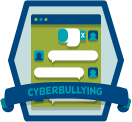
Create and hand out a scenario to groups of three students. Have each member of the group either act out or write out the scenario from a different perspective or point of view: bystander, bully, and upstander.
Have students interview the principal, a teacher, or a school board member about the policies in place at your school for bullying.
- Research what bullying laws are in place (if any) in your state, and compare to other states.
- Collect recommendations from suicide prevention specialists or hotlines on how press should cover bullying/suicide situations.
Create books with bibliographies on how to “stand up” to share with younger students. Click here for recommended children’s book reading list for some suggestions covering this topic.
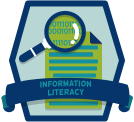
- Project of Passion: Students choose a topic they care about, research, write a paper on it, create a science experiment around it, and draw a (digital) picture book about it.
- Author Studies: Students study and do research on an author they love or would like to know more about.
- For any research project, students must collect and properly cite a variety of media from documentaries, videos, encyclopedias, books, photos, websites, and articles. This will also help students practice accessing, analyzing, organizing, and evaluating sources and information.

